After 5 days in La Paz, we headed north for 10 days to explore the rugged coast. Our goal was to see as much as possible but not go too fast that we wouldn’t have time to relax and enjoy the sights. I charted a course that included short day-sails of only a few hours. Our guidebook (Sea of Cortez, A Cruiser’s Guidebook by Shawn Breeding and Heather Bansmer) was amazingly helpful in choosing where to stop and anchor. Most of the places that we visited were because they sounded interesting from the descriptions in the guidebook. We wanted to meet local people from the small villages that dot the coastline along the Sea of Cortez. We also wanted to do some hiking, snorkeling, paddle boarding, exploring, and relaxing.
Winter Northerlies—The Sea of Cortez normally has light northerlies in the summer, but can get heavy northerlies during winter. We use the SSB radio to plot GRIB files to get weather data (both current weather and predicted weather). When we left La Paz to head north for 10 days, a cell (high wind area) was moving in a southerly direction towards us down the sea. We decided to find a cove to duck into until the cell passed. Our guidebook said Ensenada de la Roza on Isla Espiritu Santo was good for northerly protection. Espiritu Santo is a national park island 20 miles north of La Paz. When we pulled in there were 2 other boats anchored in the cove, so there was plenty of room. We put out 100’ of chain in 20’ of water for a 5:1 scope since we knew we’d be here during the blow, which would begin the following evening and last for 36 hours. We swam around the boat in warm turquoise water and relaxed. The next day we took the dinghy ashore to look around and have lunch. By then the other 2 boats had left so we had the whole cove to ourselves. With the wind starting to pick up, we sailed the dinghy back to the boat by holding up a beach mat (good thing it was directly downwind)! Back at the boat we prepared for high winds by making sure everything was lashed down or stored down below. By evening the wind picked up to a steady 20 knots with higher gusts. For the next 24 hours the wind blew steadily with 30+ knot gusts, but Apropos held well to the sandy bottom. Aside for the howling wind-noise, we were comfortable since the cove was protected from wind-generated waves. Karen baked bread, Jacintha did lots of schoolwork, and I did some misc. boat work. We all read a lot on our 3 Kindles—Karen with “Game of Thrones”, Jacintha with “Judy Rudy”, and me with “Steve Jobs”.
When the wind died down the following day, we decided to leave the sheltered bay and head north. Karen was a little bit concerned by the whitecaps we saw outside the bay but I said don’t worry, we sail in this stuff all the time in Puget Sound, so lets just stick our nose out and see what it’s like. So we left the cove and as soon as we got beyond the wind shadowing small islet just outside the cove, everything changed. The wind wasn’t that bad, maybe 15 knots, but the chop was extremely steep with a period of about 2 seconds and hitting us head-on. In the 10 years that I’ve been behind the wheel on Apropos, including coming down the Washington/Oregon coast, I’ve never seen waves that square. When they began breaking around us, we decided to head back into the cove. Even turning the boat around was worrisome because that would put us abeam to the breaking waves until we turned through 180 degrees. Fifteen minutes later we were back in the relatively calm cove where we would stay for another day.
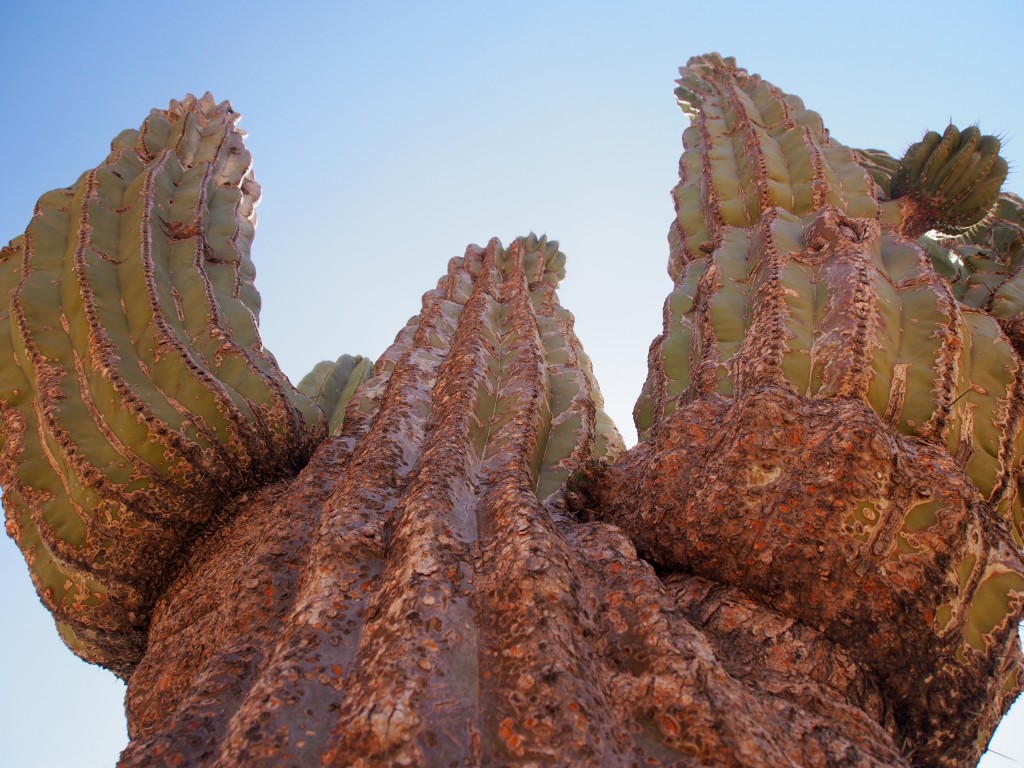
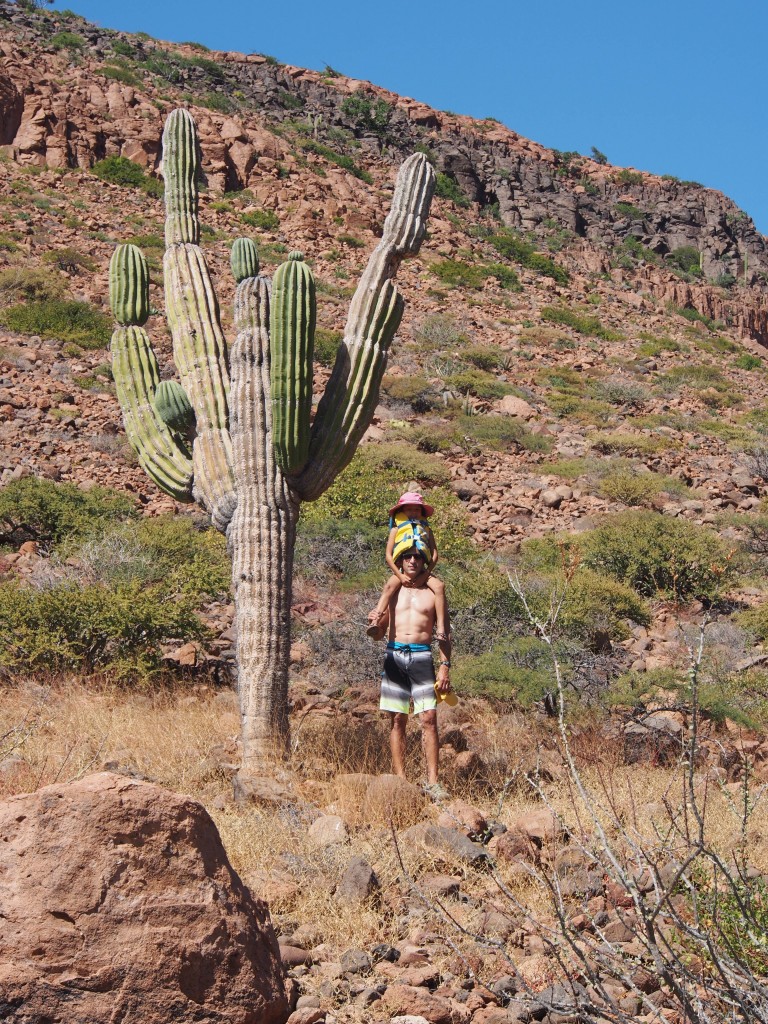
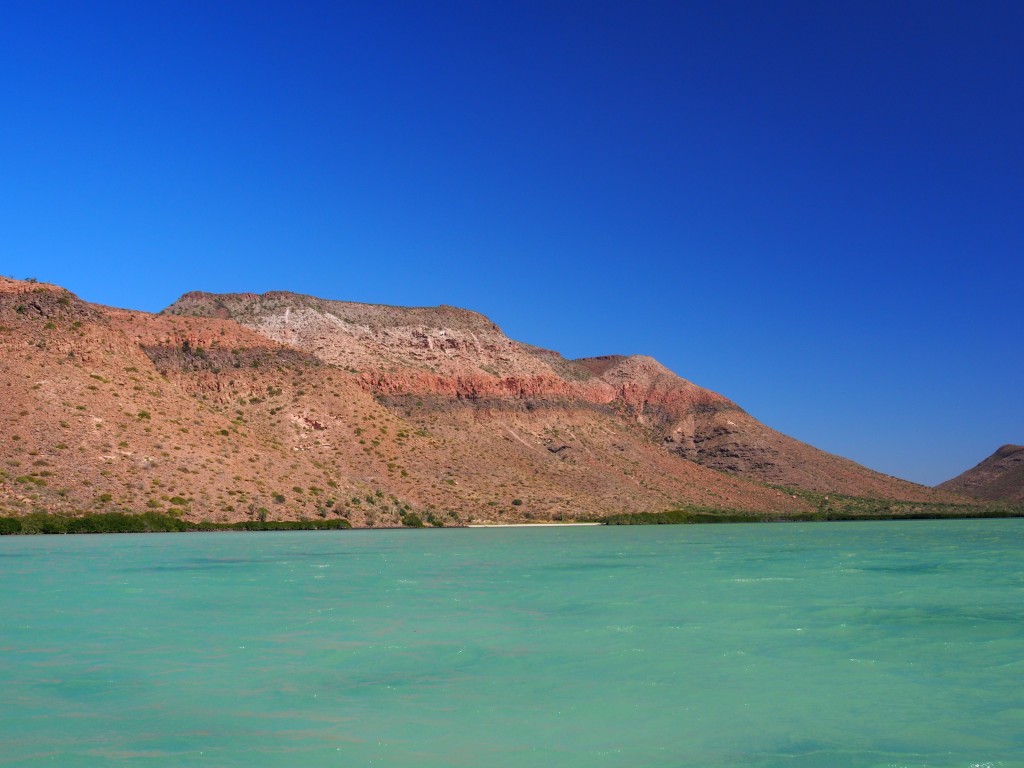
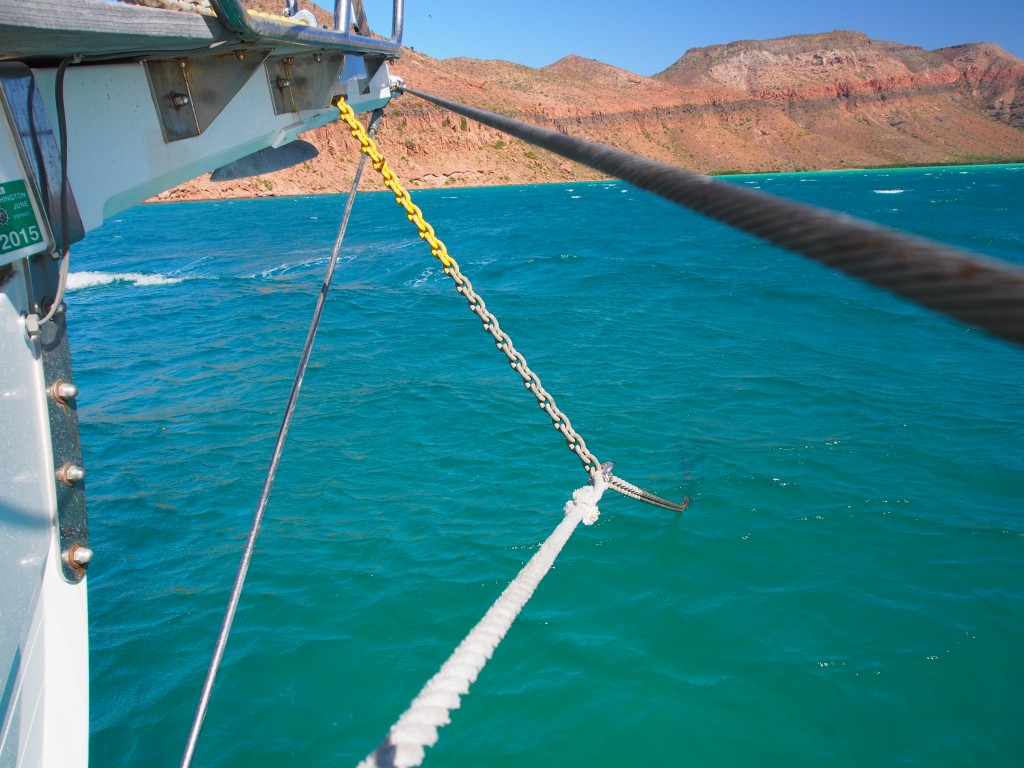
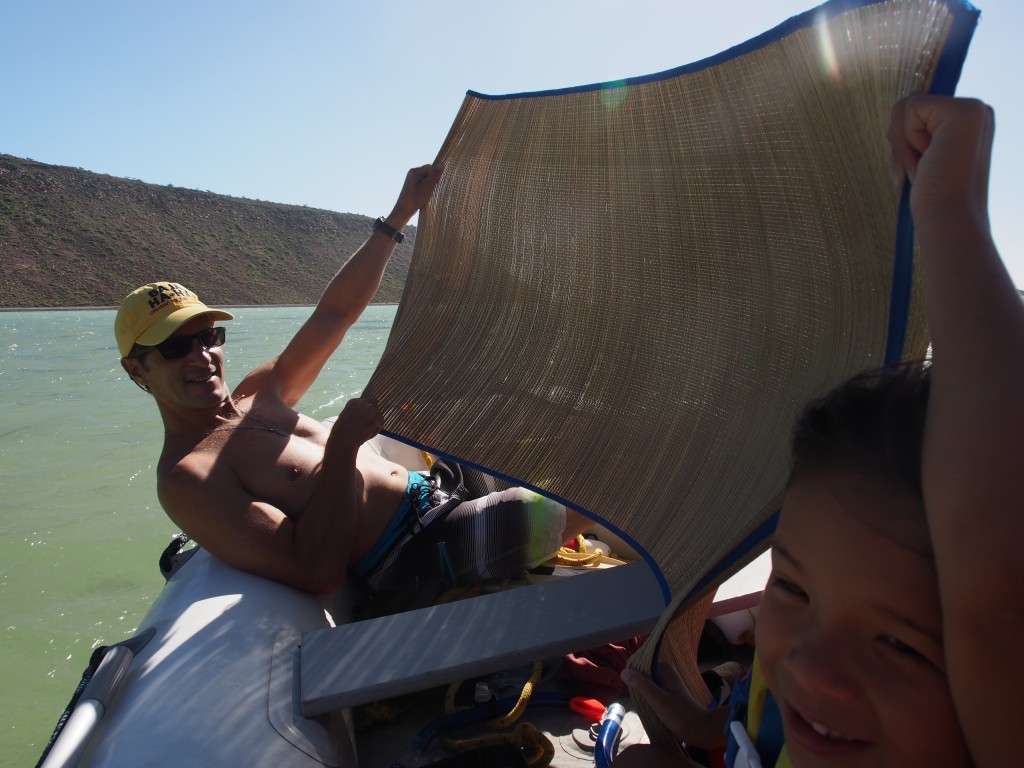
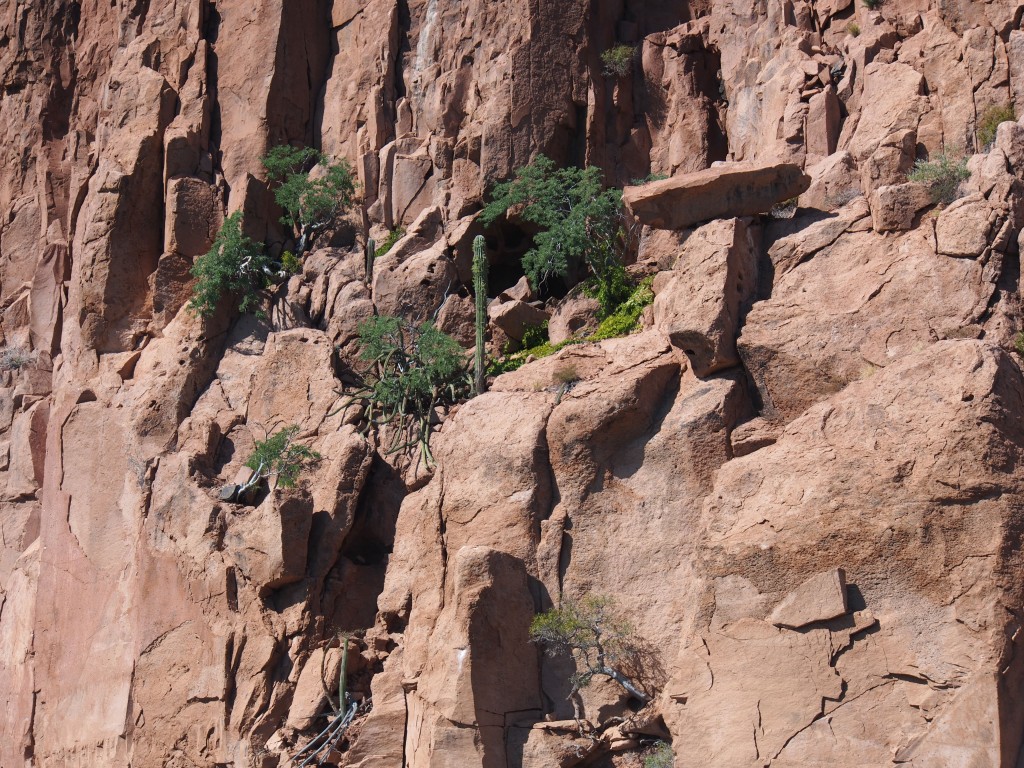
Isla San Francisco—A hard 5 hour upwind sail in medium chop was rewarded with a postcard perfect, crescent-shaped beach surrounded by warm, turquoise water. On our 2nd day there, Jacintha and I paddle-boarded to shore then hiked along a ridge overlooking the bay. Along the way we watched Turkey Vultures soar overhead. At around 1000’ we ate our snacks (skittles and peanut butter cups) and enjoyed the view. After descending back to sea level we cooled off in the water before paddle boarding back to the boat. While we were gone, Karen sewed 2 mesh bags that will be used for our diving gear.
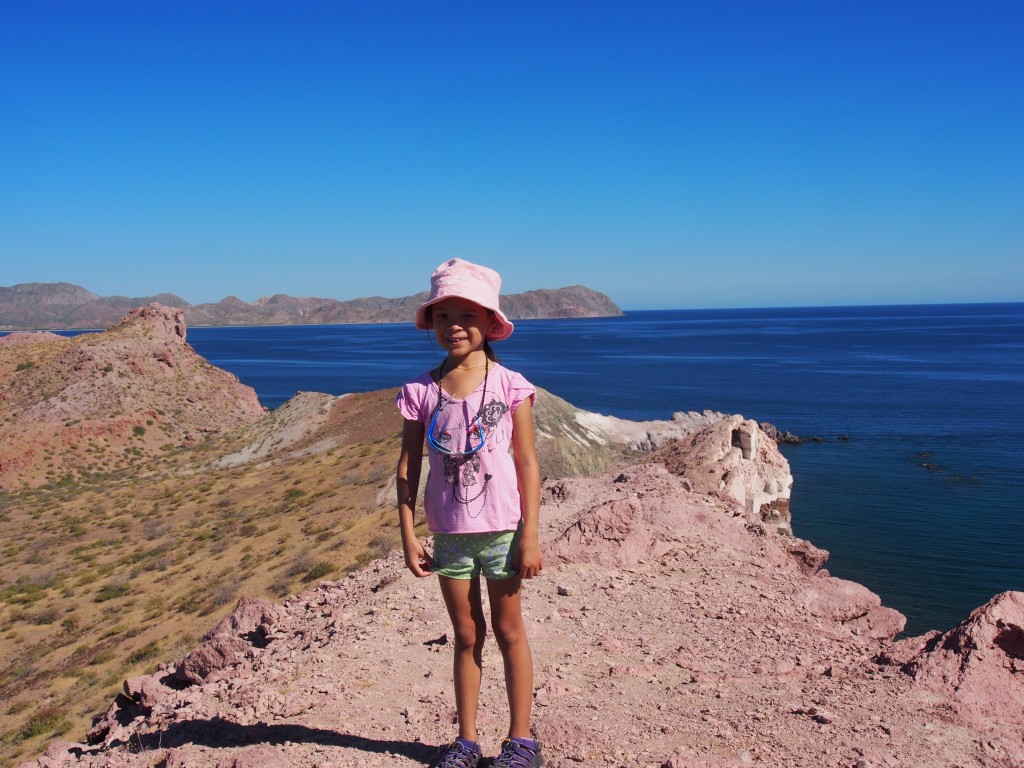
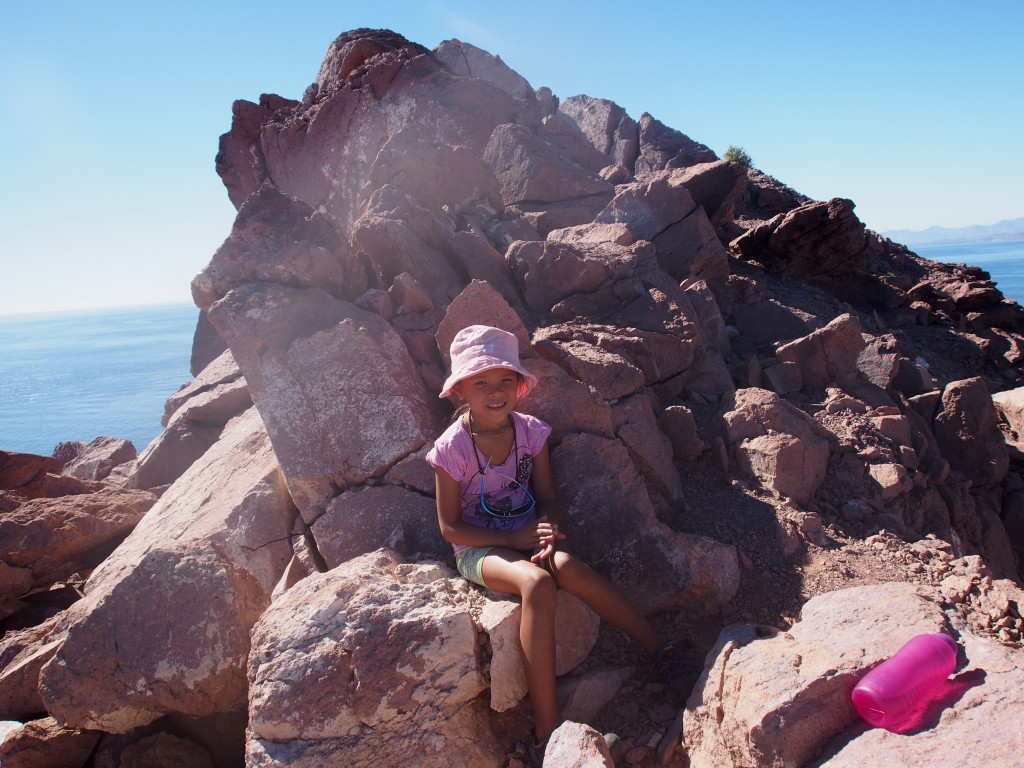
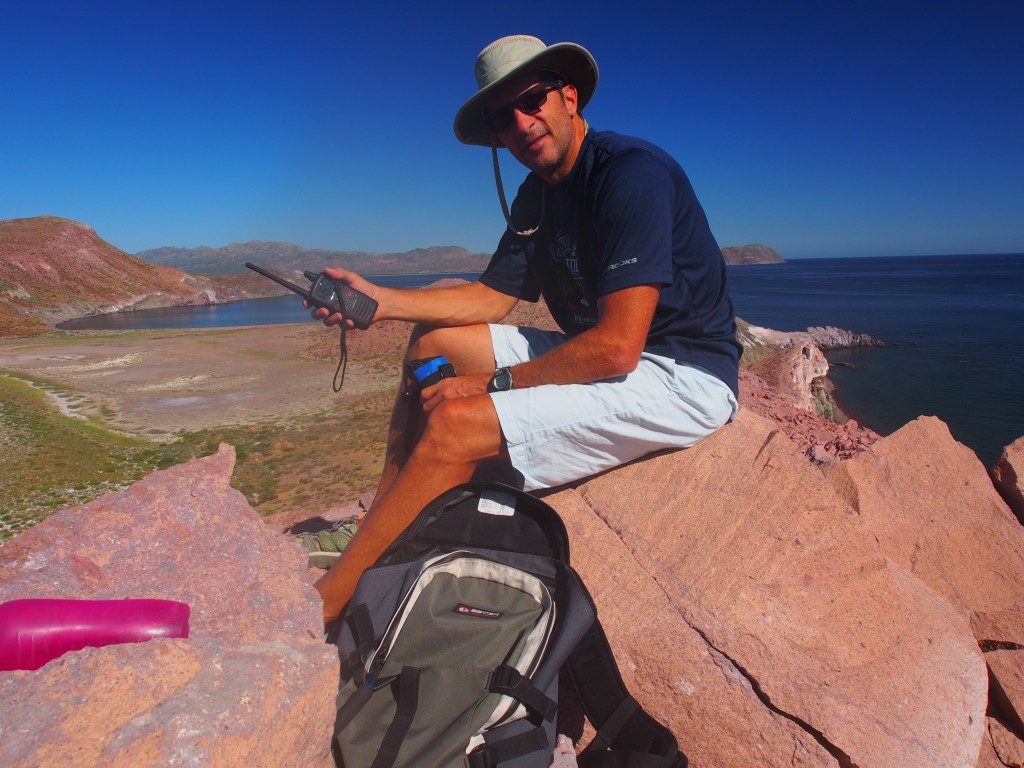
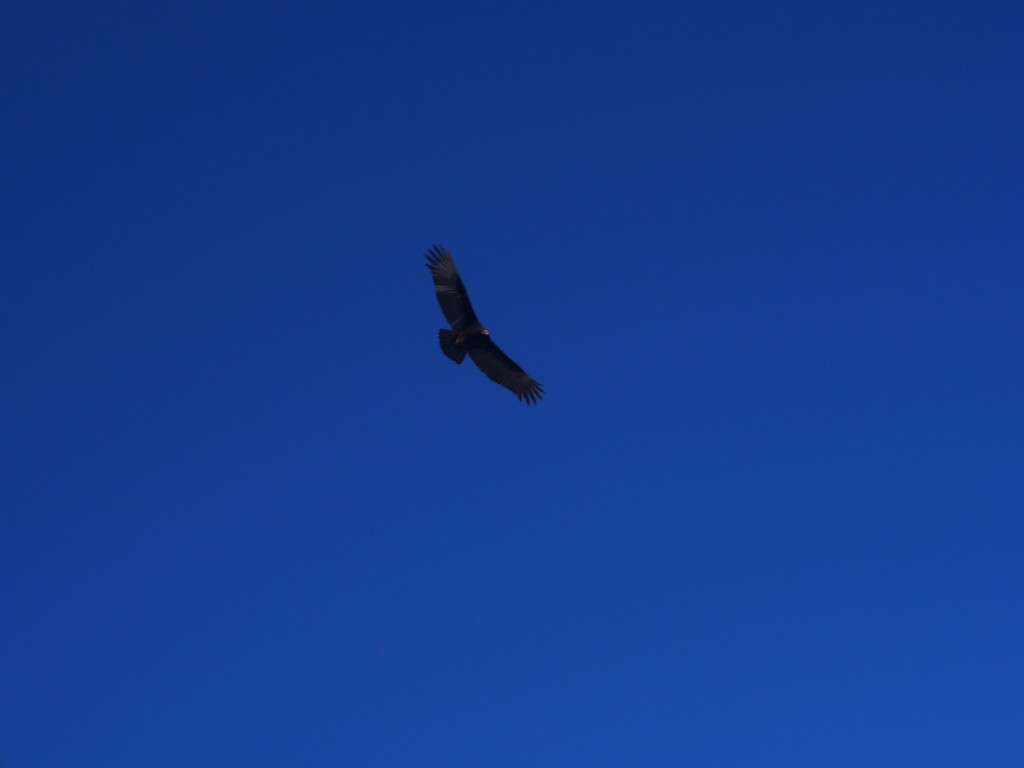
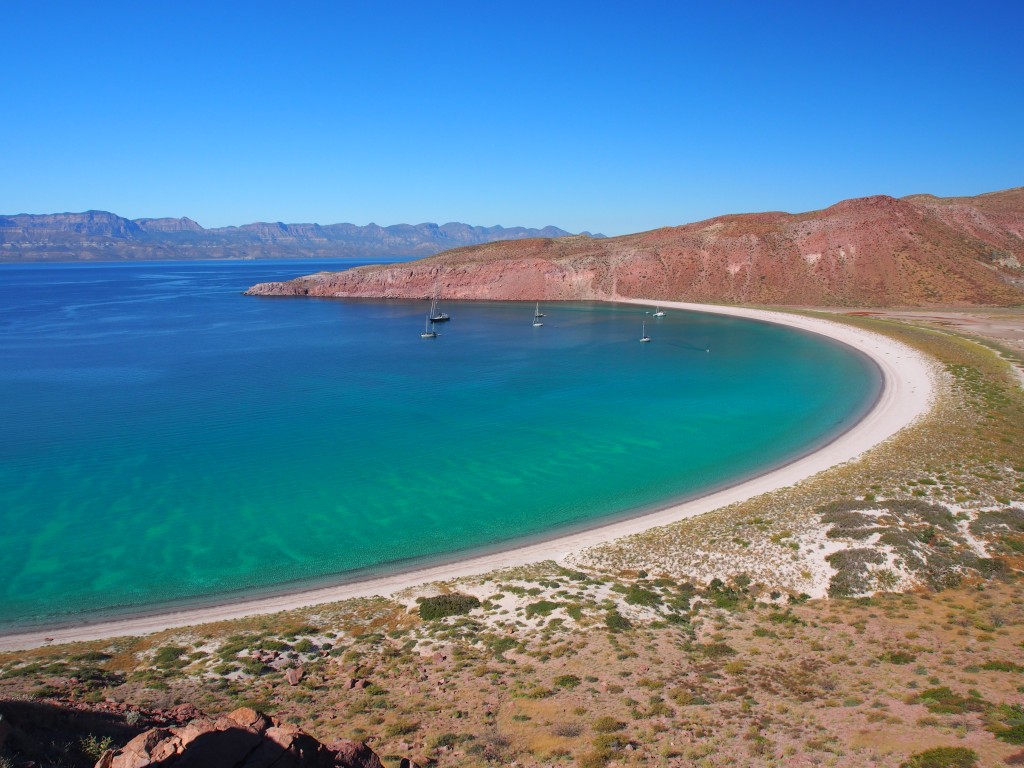
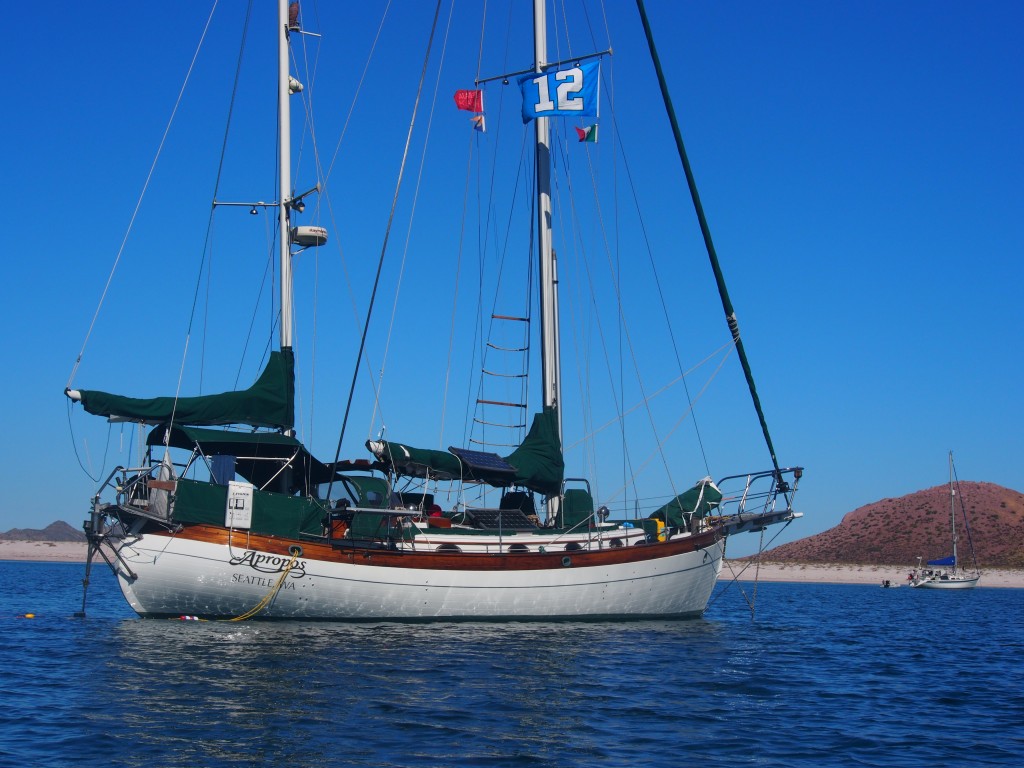
Punta San Evaristo—San Evaristo, about 2 hours north from Isla San Francisco, is a quiet little fishing village with about 20 families living there. A 70-mile road to La Paz is mostly dirt and ends here. We anchored and went ashore to buy some fish from fishermen who had just arrived in their panga with their catch of Trigger Fish. We also stopped at the Tienda for a few snacks, eggs, and produce. Back at the boat, Karen and Jacintha made cookies and bread, so the boat was smelling wonderful! We fried the Trigger Fish in garlic, pepper, and olive oil and dipped it in a wasabi sauce. The next day we went ashore and Jacintha met 2 little girls, ages 3 and 5, who live in the village. They communicated with few words but soon were playing catch with a nerf ball and singing songs from the movie Frozen in 2 different languages (the older sister wore a shirt with Olaf printed on it). When it was time for the girls to join their family to drive their fish catch to La Paz, Jacintha gave them the colored drawing of the 2 girls and their dog that she was working on, plus the crayons and ball. I thought about about the huge difference in the girls’ lives in terms of how and where they lived, their schools, and what they did for entertainment. Next we hiked to the salt evaporation pools a mile north of San Evaristo, passing a small escuela (school) and a couple of burros along the way. The pools were still full of water from when Hurricane Odile went through a few months ago. Later that day we up-anchored and motor-sailed 5 miles north to an anchorage on the north-west side on Isla San Jose.
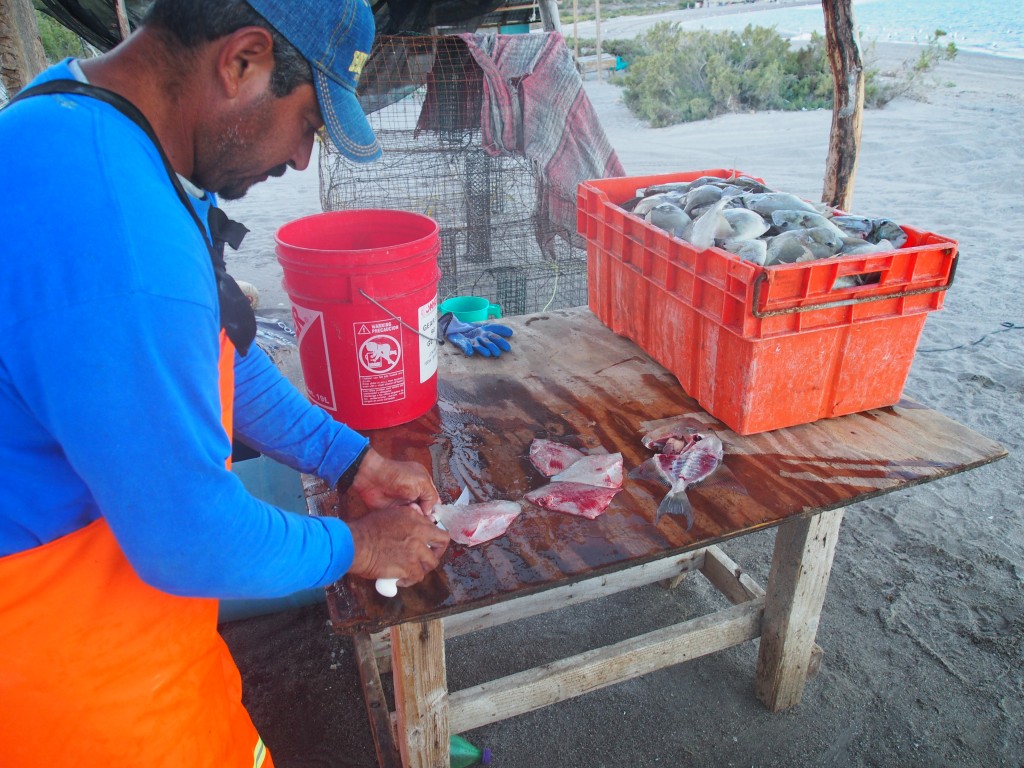
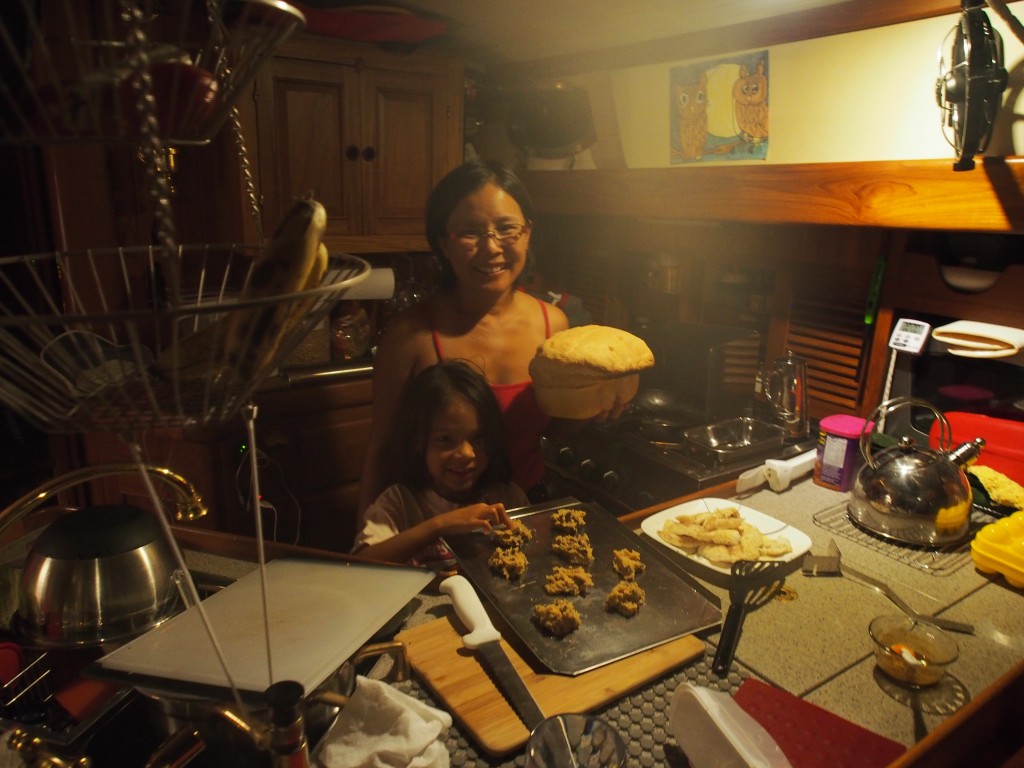
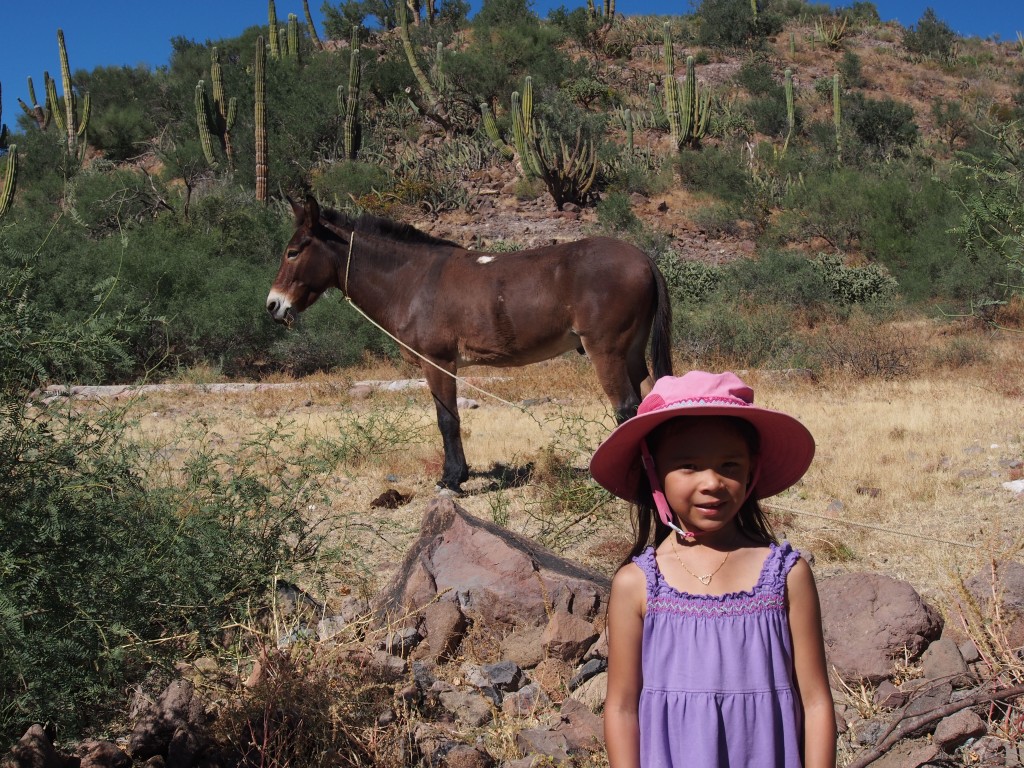
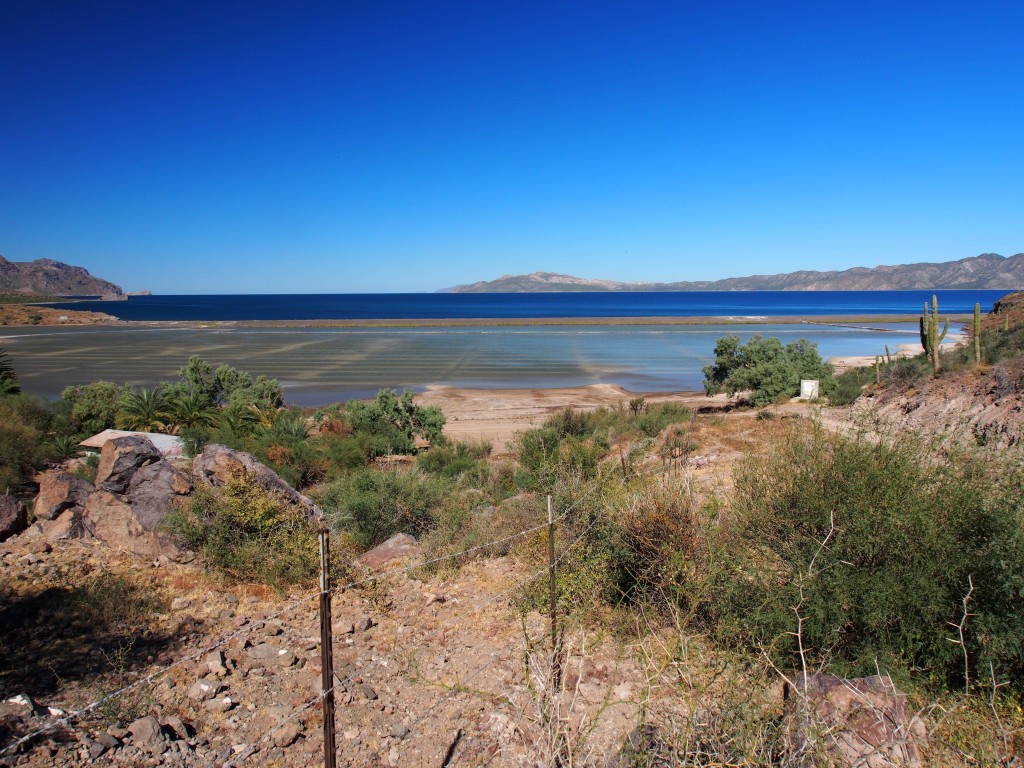
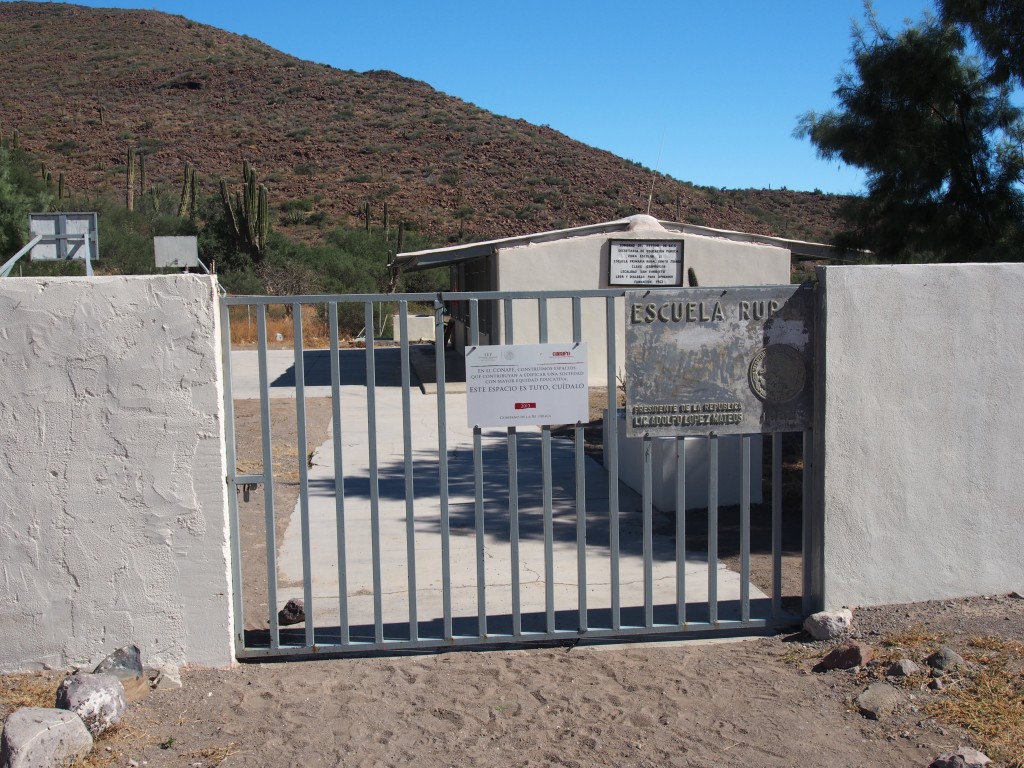
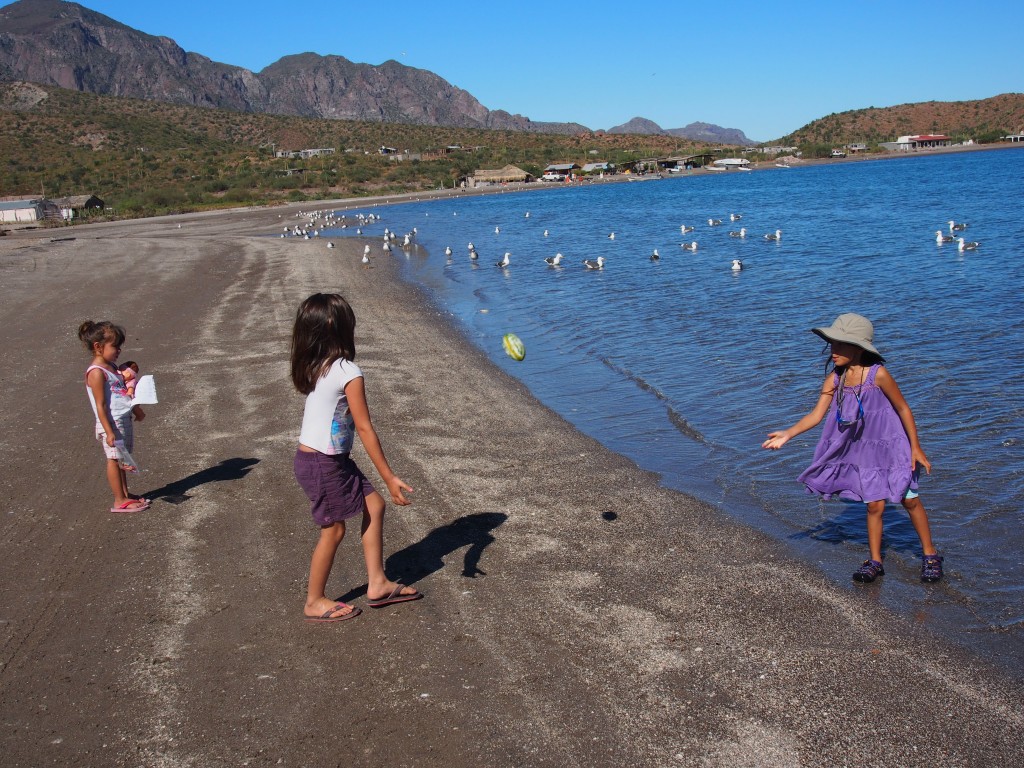
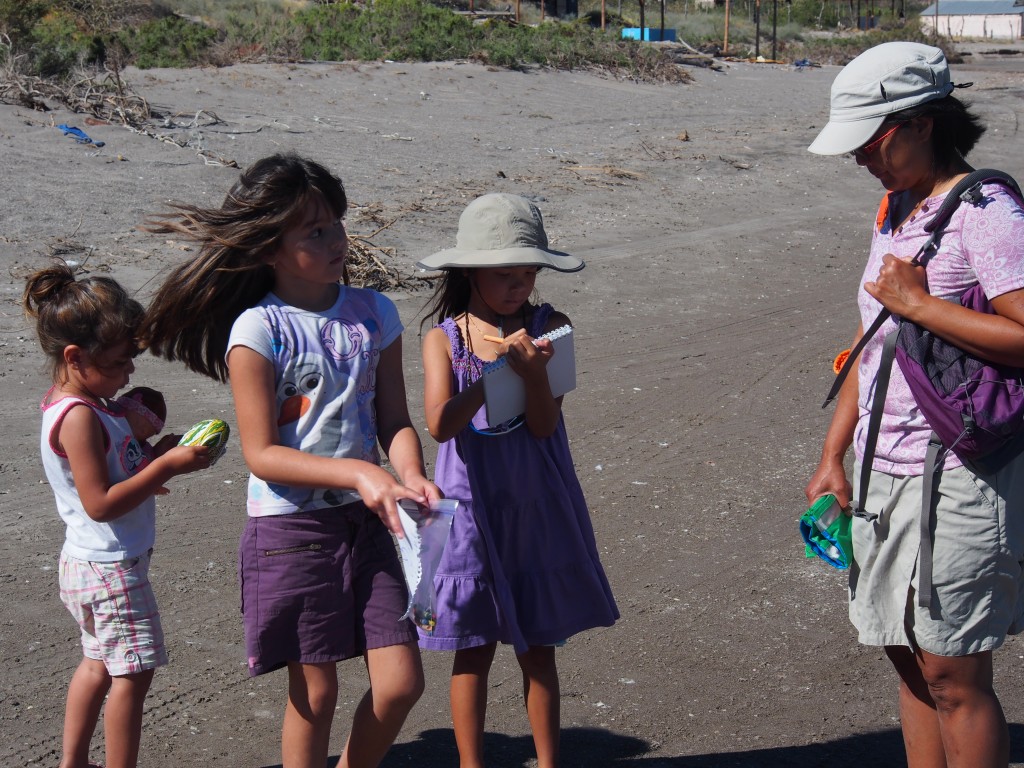
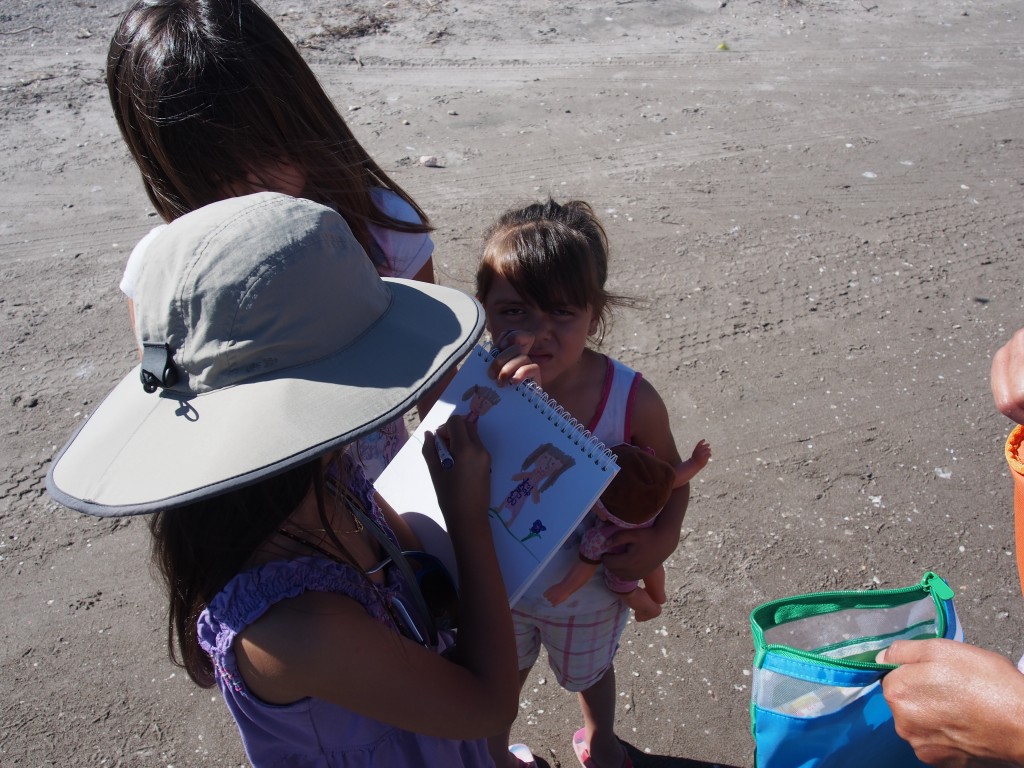
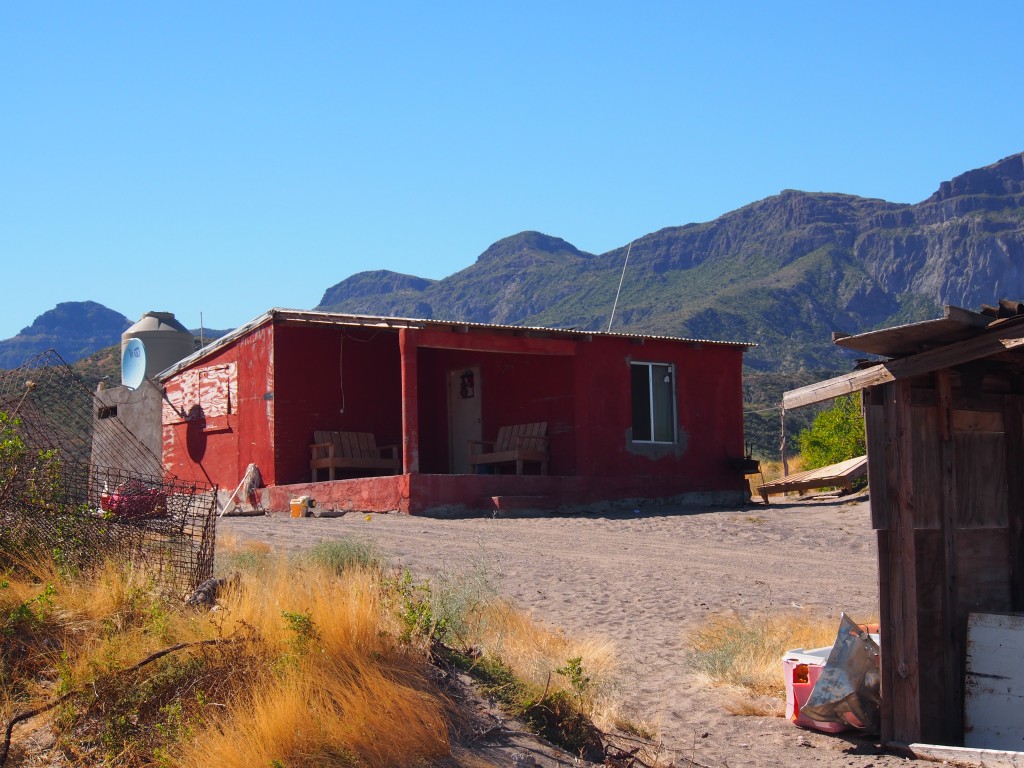
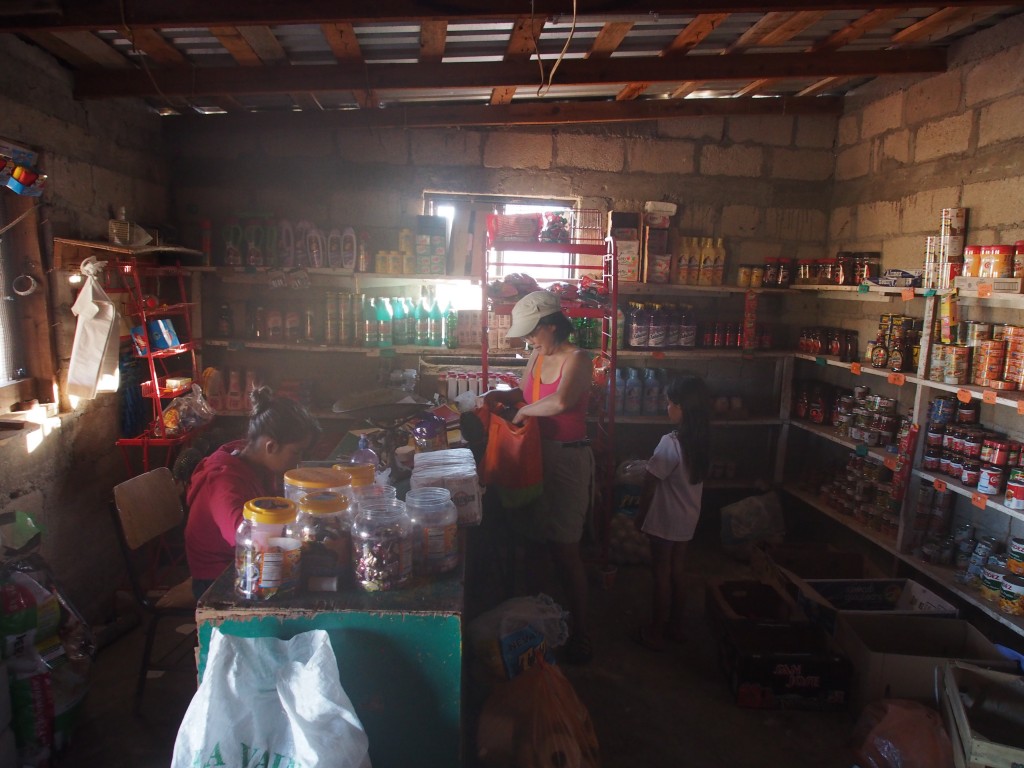
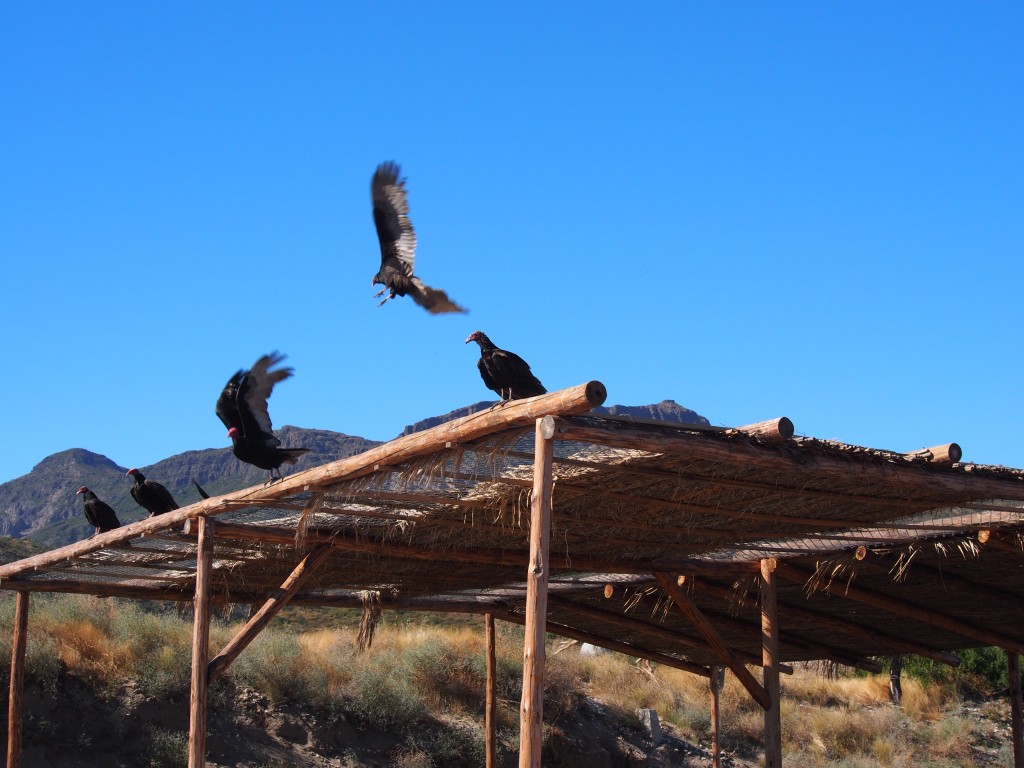
Isla San Jose—Another hour north from Punta San Evaristo is an anchorage on Isla San Jose called Mangle Solo. A highlight of this anchorage is the large carson cactus forest. These cacti can grow to 70’ tall and 4’ wide. Natives use the flesh of the cactus for its healing properties and the long straight ribs for fences and beams for housing. I did some snorkeling around the boat and removed some barnacles that had accumulated in the thru-hulls and bow thruster. We spent the night, then up-anchored after breakfast and motor-sailed to Isla Coyote.
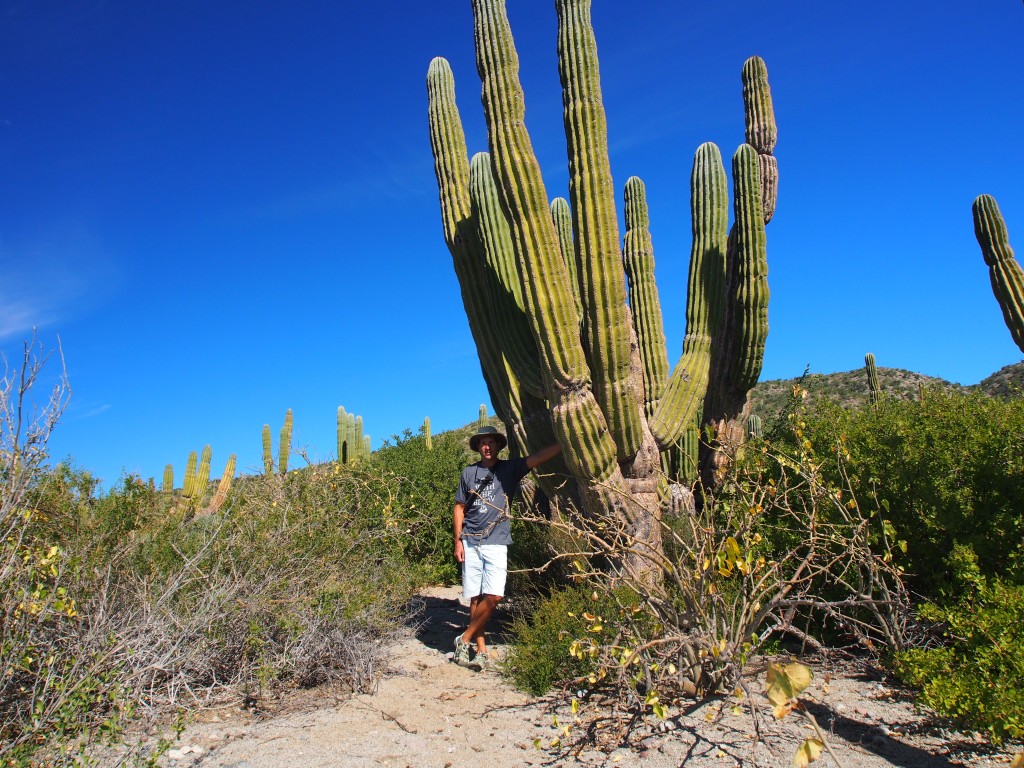
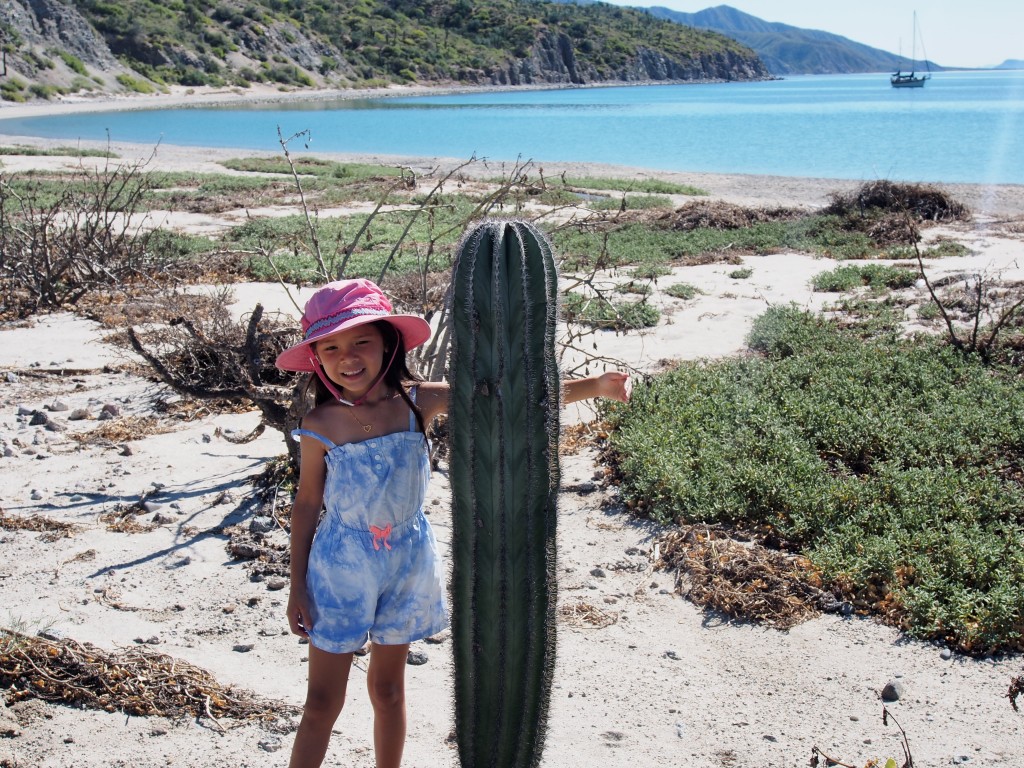
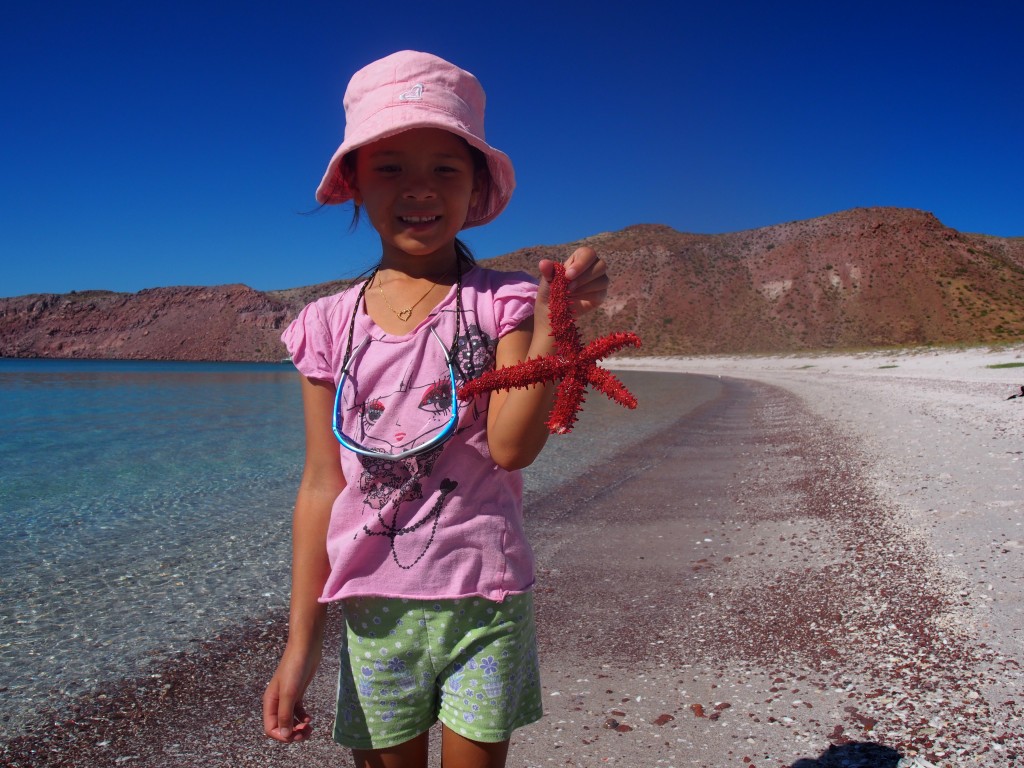
Isla Coyote—Half way between Isla San Jose and Isla San Francisco is a tiny rock island with a few houses. We anchored in 30’ of clear water and took the dinghy ashore. We were greeted by a friendly fisherman who gestured for us to go up the steep path where houses were built into the rock. At the very top was a small building that looked like a chapel. Jacintha picked out a shark-took necklace from a woman who was selling hand crafted jewelry from her porch. Her friendly husband came out and we attempted to have a conversation. We pulled out our spanish phrasebook and he got an atlas so we could show him where we are from and where we are going. The men on the island fish for a living so we bought another large Trigger Fish for 50 pesos ($4). Back at the boat, Karen found a Greek stye fish recipe using tomato, herbs, onions, goat cheese, and lemon and served it with a Greek salad and rice.
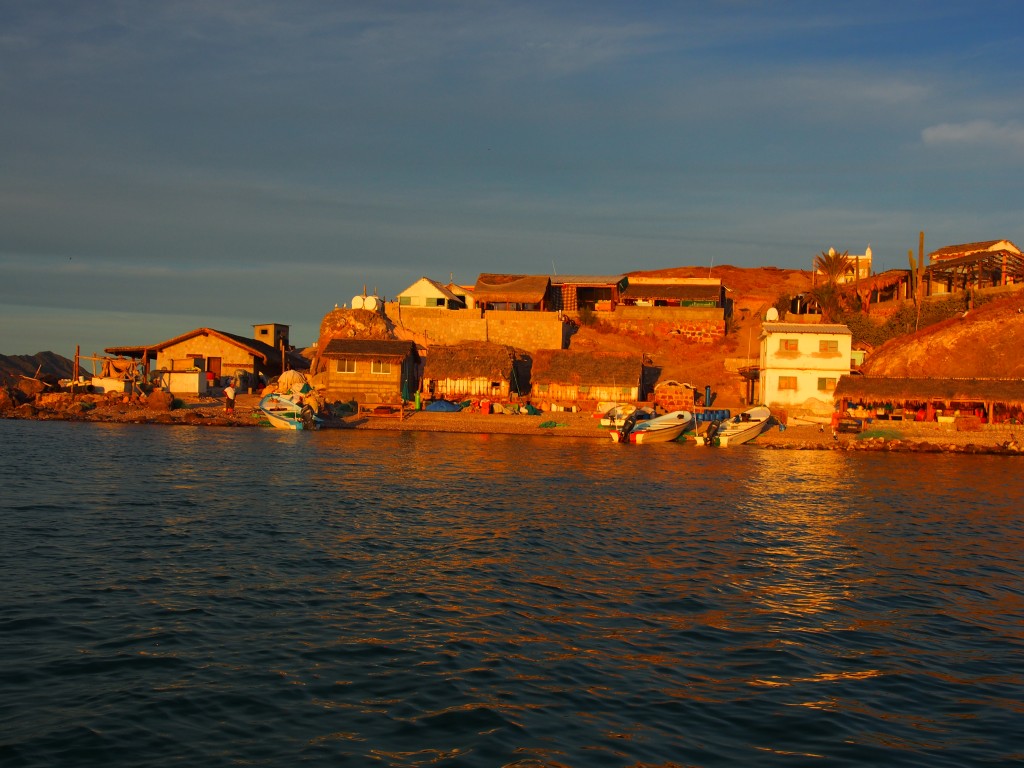
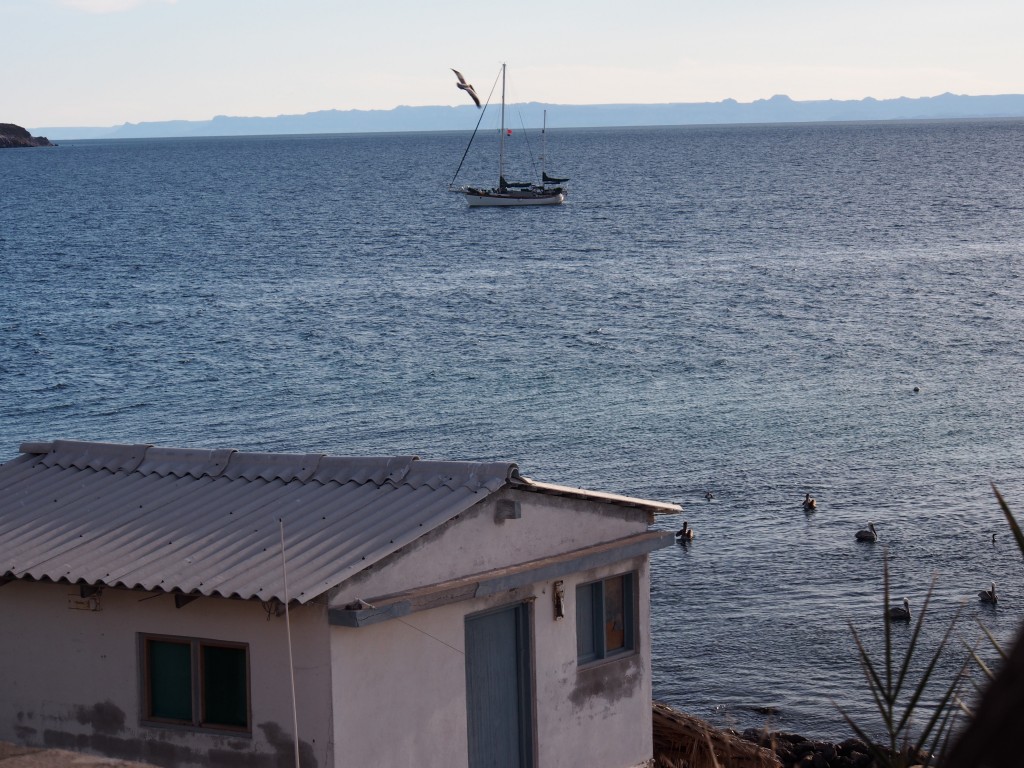
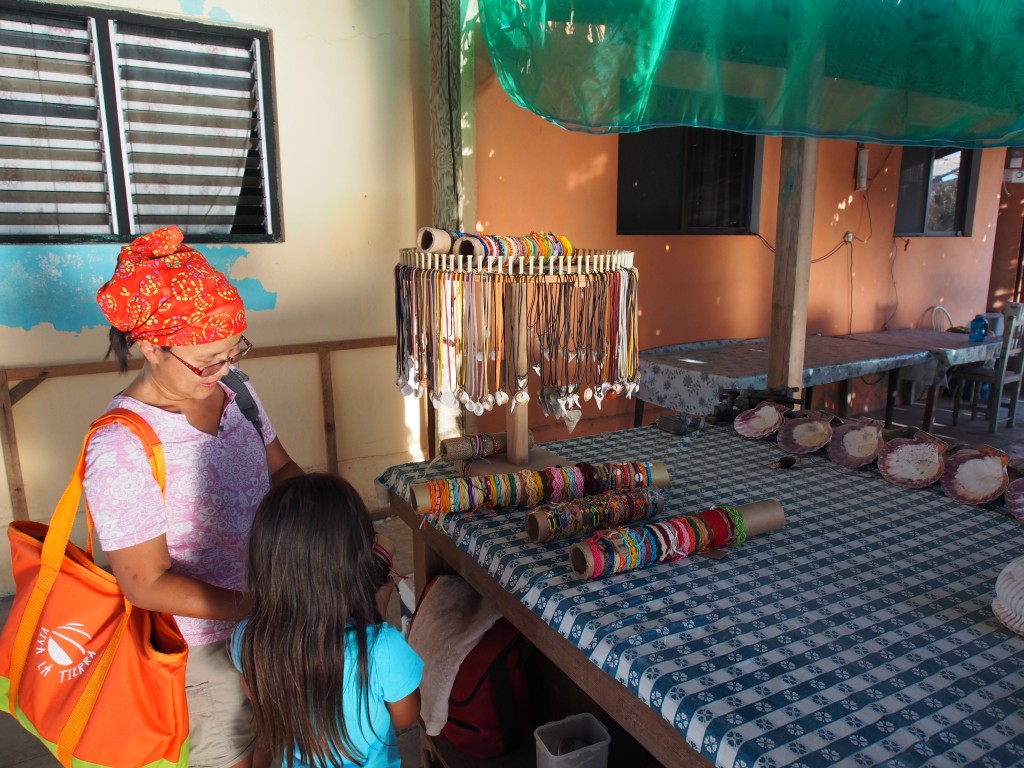
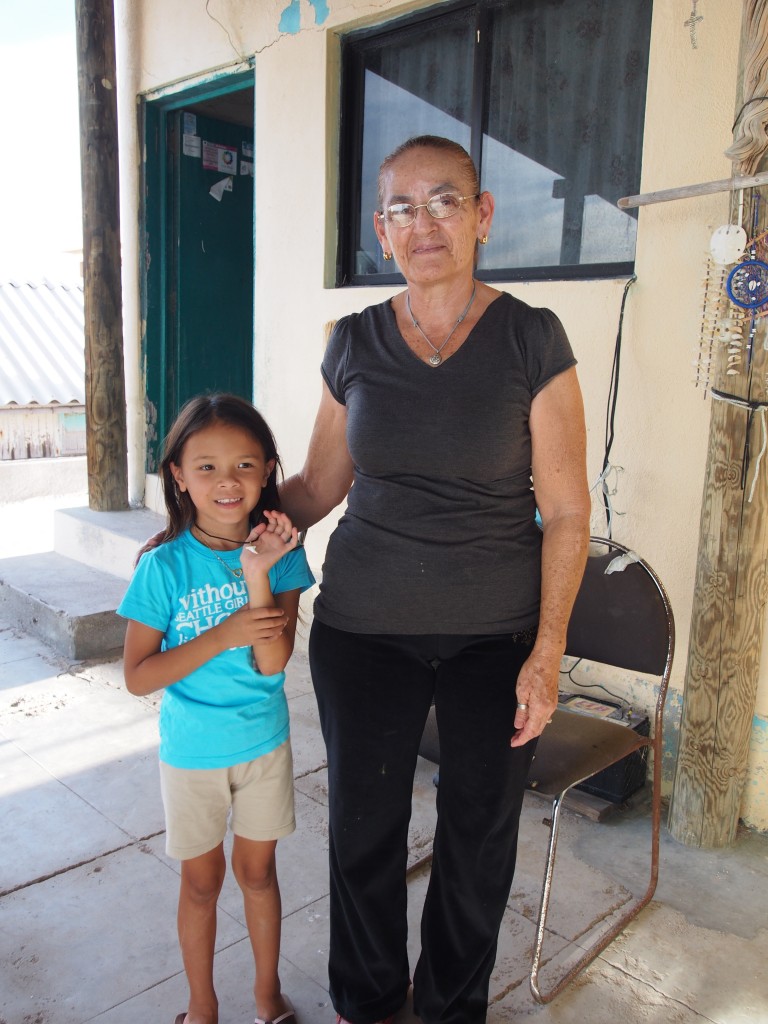
Back to La Paz—We were planning on a 2-day sail from Isla Coyote to La Paz, but woke up to a strong northerly and ended up sailing the entire 50 miles, getting in just before dark. Almost the entire sail was in 20 knot winds and steep, lumpy seas. The genoa was enough to keep up moving at 7 knots most of the way. As we neared La Paz and the wind decreased, we pulled up the mizzen sail and sailed all the way through the La Paz channel.
The past 10 days of cruising in the Sea of Cortez were very enjoyable. It felt great to be self-sufficient in a number of ways:
- Meals—There were no restaurants! We provisioned in La Paz before departing, and found just one small tienda along the way. We didn’t have any luck fishing (aside from a small puffer fish I caught while jigging at anchor), but were able to buy some great tasting Trigger Fish from local fishermen.
- Energy—We only used the Honda generator once when anchored in Ensenada de la Roza on Isla Espiritu Santo for 2-1/2 days. The rest of the time, the solar panels would do their job during the day, and the engine driven generator would make up for the evening’s lost Amp-Hours when we motored the next day.
- Water—The Spectra watermaker has been working great. Whenever we motor, we make water. We start by filling up a 5 gallon plastic container that we use for drinking. This lasts around 3 days and we use it for making coffee and tea and to fill up drinking bottles that we keep in the refrigerator. Then we switch the watermaker output to the water tanks in the bilge. This water is used for cleaning dishes, brushing teeth, filling solar shower bags, and doing laundry. The only salt water that comes into the boat is for the head. We’ve been running the watermaker every other day for 2 to 3 hours, which makes 32 to 48 gallons. So far the only maintenance has been to replace the paper filter once, and I brought a dozen along on the trip.
- Laundry—A lot of our clothes are quick-dry type (my years of running races got me a locker full of tech shirts!). We have 2 8-gallon buckets we use to launder our clothes—one for washing and one for rinsing. Plenty of lifelines and good clothespins (some old fashion wooden ones and some stainless steel ones where you go Oh shit! when one falls overboard). A laundry plunger is used for the wash cycle. We get by by washing just the lightweight, quick-dry things and leave the cotton shirts and towels for when we find laundry service. We use the leftover water to rinse the salt off the cap rails, gunwales, and coach top.
We also kept life pretty simple—no cell phones, no internet, no media (an occasional email via SSB was our only contact with friends/family). When we weren’t out exploring, we read a lot, played games, and did a few boat chores.
Jacintha’s Blog:
Make New Friends–Rrrrrrrrrrr! went the dinghy engine. Me, mommy, and daddy were going to San Everisto in our dinghy. We brought crayons, paper and a water football for kids we found at Everisto. Once we got there, we parked at the beach. Then a five and a two year old caught up with us. We tried to talk but too bad they spoke Spanish. Luckily we had a Spanish book. After a little bit of talking, we gave them the crayons and ball. The next thing I knew I was playing catch with the five year old girl. Then mommy and daddy left us to play. We found a trigger fish and a puffer fish. After that we did a little bit of coloring, then my new friends had to go to La Paz to sell fish. So I looked for my mom. When I found her I found a dog who caught rocks you throw in the water. The end.